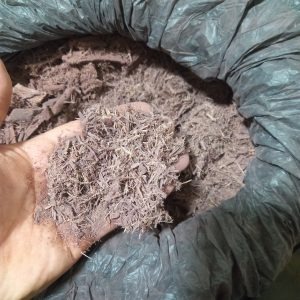The Mimosa Tree vs The Mimosa Hostilis – What’s the Difference?
When it comes to natural plants with unique cultural, medicinal, and practical value, the Mimosa Tree and Mimosa Hostilis often come into discussion. While both share the name “Mimosa,” they are vastly different in terms of origin, appearance, and benefits. At Mimosa Tree vs Mimosa Hostilis, we provide clear insights to help you understand these two remarkable plants and make informed decisions when choosing between them.
Introduction to the Mimosa Tree
The Mimosa Tree, scientifically known as Albizia julibrissin, is admired for its ornamental beauty. Known as the “Silk Tree,” it features fluffy pink blossoms that bloom in the summer, creating a tropical and decorative landscape. This tree is primarily valued for its aesthetic appeal and is commonly found in gardens and parks worldwide.
Key Features of the Mimosa Tree:
- Striking pink flowers with a delicate fragrance
- Fast-growing ornamental tree for landscaping
- Attracts butterflies and pollinators
- Used in traditional herbal practices for calming effects
While beautiful, the Mimosa Tree is largely cultivated for its decorative charm rather than practical applications.
Introduction to Mimosa Hostilis
Unlike its ornamental cousin, Mimosa Hostilis (MHRB) is renowned for its powerful practical uses. Native to South America, this plant has been celebrated for centuries by indigenous cultures for its healing and dyeing properties. The inner root bark of Mimosa Hostilis is especially prized for its natural compounds and versatility.
Key Features of Mimosa Hostilis:
- Rich in tannins and natural compounds
- Widely used in skincare for its soothing effects
- Traditional use in natural dyeing (fabrics and leather)
- Cultural significance in indigenous medicine
The Mimosa Hostilis plant stands out not just for its beauty but for its wide range of practical applications that continue to attract global interest.
Mimosa Tree vs Mimosa Hostilis – The Key Differences
While both plants carry the Mimosa name, their purposes are quite different:
- Appearance: The Mimosa Tree is grown for beauty; Mimosa Hostilis is harvested for practical benefits.
- Applications: The Mimosa Tree is ornamental, while Mimosa Hostilis has diverse uses in skincare, textiles, and wellness.
- Geographic Origin: Mimosa Tree thrives in Asia and Europe, while Mimosa Hostilis is native to Brazil and South America.
- Cultural Value: Mimosa Hostilis holds deep cultural significance, while the Mimosa Tree is valued mostly for landscaping.
Why Choose Mimosa Hostilis from website name?
At website name, we specialize in providing premium Mimosa Hostilis products, carefully sourced and quality-tested for authenticity. Whether you are a skincare enthusiast, artisan, or researcher, our Mimosa Hostilis is tailored to meet your needs with guaranteed purity and potency.
Our Commitment:
- Ethically sourced materials
- High-quality processing for maximum benefits
- Secure packaging and worldwide delivery
- Trusted service with proven customer satisfaction
Choosing the Right Plant for Your Needs
If you are seeking ornamental beauty for your garden, the Mimosa Tree is a perfect choice. Its soft pink blossoms and elegant shape create a vibrant atmosphere. However, if your focus lies in wellness, traditional use, or crafting with natural dyes, Mimosa Hostilis is undoubtedly the plant for you.
Final Thoughts
Both plants carry the same family name but serve very different purposes. The Mimosa Tree enchants with its elegance, while Mimosa Hostilis continues to impress with its powerful natural properties. At website name, we guide you toward the right choice, whether it’s decorative charm or practical utility.
Invest in authenticity and experience the difference between the Mimosa Tree and Mimosa Hostilis today. Discover the plant that truly fits your lifestyle and unlock its unique potential with mimosarootspace.


